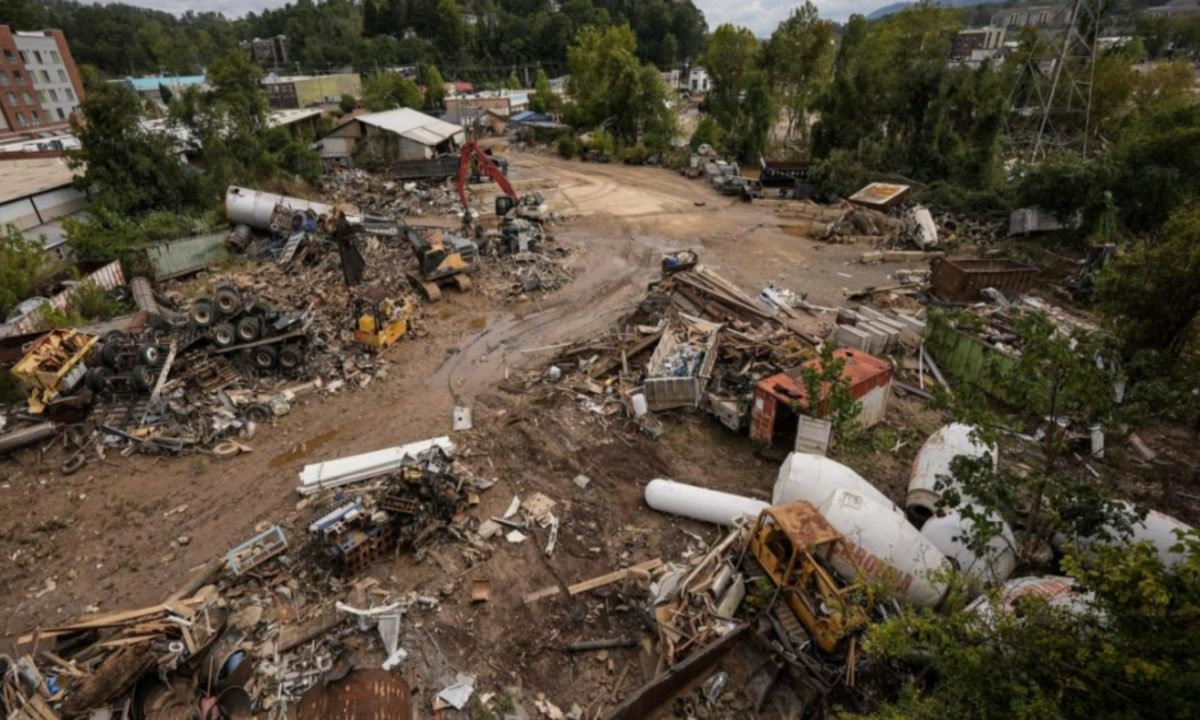North Carolina’s legislative committees have kicked off the year with a focus on disaster recovery following the devastation of Hurricane Helene. As the state continues to grapple with the damage left by the storm, lawmakers are debating how much additional funding is necessary for relief efforts and how to best manage the resources.
The discussions are taking place under the leadership of new administrations. Democratic Governor Josh Stein, who was sworn in earlier this month, wasted no time taking action. One of his first moves as governor was to sign executive orders that address the ongoing recovery efforts, including the creation of a new state agency called GROW NC. This agency is designed to take over from the previous Rebuild NC program, which had faced criticism for being slow and over-budget in its recovery efforts under former Governor Roy Cooper’s administration.
Governor Stein’s Action on Helene Recovery
Governor Stein’s executive orders signal a fresh approach to handling the state’s response to the damage caused by Hurricane Helene, the state’s deadliest and most economically damaging natural disaster. One of the key actions was the establishment of GROW NC, which will focus on improving the recovery process in western North Carolina, the area hit hardest by the storm.
The House Select Committee on Helene Recovery is set to meet on Wednesday to hear from Matt Calabria, the head of GROW NC. Calabria, a former Wake County commissioner, was appointed by Stein to oversee the recovery effort. During this meeting, the committee, led by Reps. John Bell (R-Wayne) and Dudley Greene (R-McDowell), will discuss the next steps for recovery and decide how much more money should be allocated to the region.
In addition to state officials, lawmakers will hear updates from the Federal Emergency Management Agency (FEMA) on how much federal money is expected to flow into the area and what the federal government’s role will be in the recovery process.
Federal and State Debate Over Recovery Spending
While the need for additional relief funds is clear, there is debate among state lawmakers about how much the state should spend. There is consensus, however, that state funding will not be enough to fully cover the costs. The federal government is expected to provide a significant portion of the recovery funds, but there is uncertainty about the future of FEMA’s role in disaster relief.
President Donald Trump visited western North Carolina last week and raised the possibility of dismantling FEMA. He suggested that instead of FEMA coordinating relief efforts, the federal government could provide direct funding to state governments, leaving them to manage the distribution of aid.
Trump has also signed an executive order aimed at cutting government spending on grants and other aid programs through the Office of Management and Budget (OMB). This order, which is still subject to legal challenges, has raised concerns among state leaders, including Governor Stein. Stein expressed worries that the order, if allowed to go into effect, could hurt recovery efforts in western North Carolina by freezing federal funds meant for disaster relief.
Potential Impact of Trump’s Executive Order
Governor Stein has made it clear that he is concerned about the implications of the OMB’s order to freeze federal funding. On social media, he said, “I am concerned that freezing federal funding will hurt North Carolinians, especially those recovering in western North Carolina.” The order has been temporarily blocked by a federal judge, but it could be reinstated in the near future, creating uncertainty for state and local recovery efforts.
In contrast, U.S. Rep. Tim Moore, a Republican from Cleveland County and the former speaker of the North Carolina House of Representatives, reached out to the White House and was assured that the Trump administration did not intend to shut down disaster relief funding. Moore, in a statement, explained that Trump’s leadership was focused on ensuring that resources were directed to those who needed them the most, without being diverted to “woke and wasteful” policies from the previous administration.
Looking Ahead: What’s Next for Helene Recovery
As North Carolina lawmakers continue their discussions on how to allocate resources for Helene recovery, they will also need to monitor the federal response and the potential effects of President Trump’s executive order. While there are concerns about delays in funding, there is also a clear commitment among state officials to support the communities in western North Carolina that are still struggling to recover from the storm.
State legislators are expected to meet again later this week to further discuss the role of FEMA and the funding needed to rebuild. The outcome of these meetings will play a significant role in determining the pace and effectiveness of recovery efforts in one of the state’s hardest-hit regions.
Disclaimer—Our team has checked this article to ensure its accuracy and eliminate any misinformation. We are committed to providing clear and reliable information for our readers.




